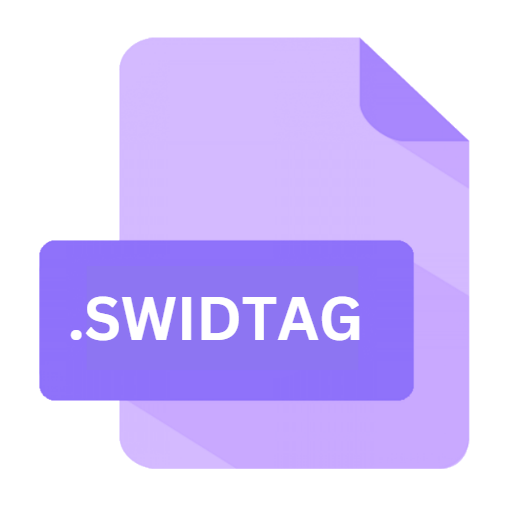.SWIDTAG File Extension

SWID Tag File
| Developer | N/A |
| Popularity | |
| Category | Data Files |
| Format | .SWIDTAG |
| Cross Platform | Update Soon |
What is an SWIDTAG file?
SWID (Software Identification) Tag files, denoted by the “.SWIDTAG” file extension, are essential components in software asset management and cybersecurity.
These files contain metadata that uniquely identify software applications installed on a system. They play a crucial role in tracking software usage, ensuring compliance, and managing vulnerabilities.
More Information.
SWID tags were conceived to address the challenges associated with software asset management, including software discovery, inventory, and license compliance.
Before their introduction, organizations struggled with disparate methods of software identification, leading to inefficiencies, compliance risks, and security vulnerabilities.
The primary purpose of SWID tags is to provide accurate and standardized metadata about software installations. This metadata includes information such as the software name, version, publisher, installation date, and unique identifiers.
By embedding this information within SWID tags, organizations can streamline their software inventory processes, enhance license compliance efforts, and improve security posture.
Origin Of This File.
The genesis of SWID tags can be traced back to the need for standardized methods of identifying software products.
In 2009, the International Organization for Standardization (ISO) released ISO/IEC 19770-2, which standardized the format and content of SWID tags.
This standardization marked a significant milestone in the realm of software asset management, providing a uniform method for identifying and managing software installations.
File Structure Technical Specification.
SWID tag files adhere to the XML (Extensible Markup Language) format, making them human-readable and machine-parseable.
The structure of a SWID tag file typically includes various elements defined by the ISO/IEC 19770-2 standard:
- Software Identification Tag (SWID): This element serves as the root of the SWID tag file and encapsulates all other elements.
- Entity Elements: These elements provide detailed information about the software product, including its name, version, and unique identifier.
- Link Elements: These elements establish relationships between software products and other entities, such as patches, updates, or components.
- Payload Elements: These elements contain additional information related to the software product, such as digital signatures or installation parameters.
SWID tags follow a hierarchical structure, allowing for the representation of complex software ecosystems and dependencies.
The standardization of SWID tag files ensures interoperability across different software management systems and facilitates automation of software inventory processes.
How to Convert the File?
Converting SWID tag files may be necessary for compatibility with specific software management systems or reporting tools.
While SWID tags are inherently XML-based and human-readable, specialized tools or scripts may be employed to convert them into other formats such as CSV (Comma-Separated Values) or JSON (JavaScript Object Notation).
Additionally, some software management platforms offer built-in functionality for importing and exporting SWID tag files, simplifying the conversion process.
Advantages And Disadvantages.
Advantages:
- Standardization: SWID tags adhere to a globally recognized standard (ISO/IEC 19770-2), ensuring consistency and interoperability across diverse software environments.
- Accurate Software Identification: SWID tags provide detailed metadata about software installations, enabling organizations to maintain an accurate inventory of their software assets.
- Enhanced Security: By identifying installed software and associated vulnerabilities, SWID tags help organizations mitigate security risks and ensure timely application of patches and updates.
- Compliance: SWID tags support license compliance efforts by providing visibility into software usage and entitlements, thereby reducing the risk of non-compliance penalties.
Disadvantages:
- Adoption Challenges: Despite the standardization efforts, widespread adoption of SWID tags remains a challenge, particularly among smaller software vendors and organizations.
- Complexity: Managing SWID tags for large software ecosystems can be complex and resource-intensive, requiring dedicated tools and processes.
- Dependency on Metadata Accuracy: The effectiveness of SWID tags relies on the accuracy and completeness of the metadata provided, which may vary depending on the software vendor or installation process.
- Limited Support in Legacy Systems: Older software systems may lack support for SWID tags, hindering their integration into existing software management workflows.
How to Open SWIDTAG?
Open In Windows
- Use a text editor such as Notepad or Notepad++ to open SWID tag files.
- Alternatively, utilize software management tools compatible with Windows, such as Microsoft System Center Configuration Manager (SCCM) or third-party asset management solutions.
Open In Linux
- Linux users can use text editors like Vim or GNU Emacs to open SWID tag files from the command line.
- Software management platforms such as Red Hat Satellite offer native support for managing SWID tags on Linux distributions.
Open In MAC
- TextEdit, the default text editor in macOS, can be used to open SWID tag files.
- Software management tools like Jamf Pro provide support for managing SWID tags on macOS devices.













